A Conversation with Ohad Naharin about Kamuyot, Venezuela, Gaga and more
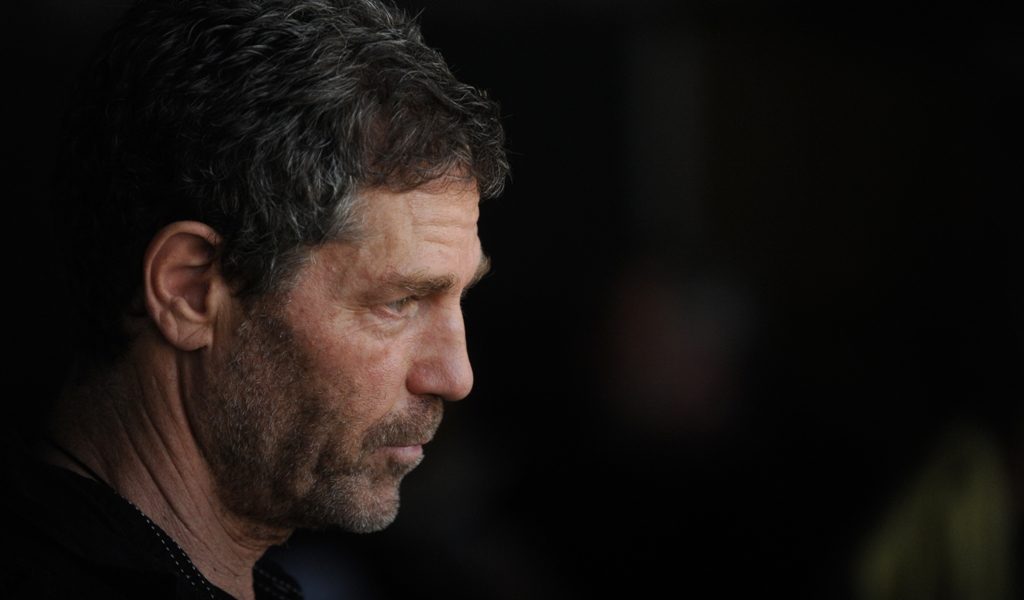
As part of the Suzanne Dellal Center’s International Exposure Festival, Ohad Naharin, internationally acclaimed choreographer and Artistic Director of Batsheva Dance Company held a Questions and Answers session with the foreign guests following a performance of Kamuyot by Batsheva- The Young Ensemble. Atanas Maev, CEO of Derida Dance Center in Sofia, Bulgaria, recorded the conversation.
This is the transcript.

Photo by Atanas Maev
ON: I don’t know what you know most of you about this show. This show is usually performed for schools in their gyms for kids and teenagers. Maybe the only difference, when I made it, was that I felt my heart was a bit larger because I was doing it for kids.
How many people are here from the Exposure? I feel so sorry for you guys. What number performance is this?
{Laughter}
Ok. I hope you’re having a good time.
So. Would you like to ask something?
Q: What does it mean, the name Kamuyot?
ON: What does it mean Kamuyot? At some point in the process I needed to come up with a name. Our publicist met me in the corridor and asked me, ‘So, what will be the name of the next piece because we need to send a press release?’ She was holding a piece of paper in her hand and I asked her to show it to me. On it was written ‘something, something, Kamuyot.’ Kamuyot means in Hebrew, quantities. Like if you do something ‘in Kamuyot’ it means ‘in quantities.’ The word ‘quantities’ was there and I pointed to the word and said, ‘this is the name’.
It’s not that I don’t take the research of the name seriously but I don’t take the name itself seriously. I feel that the name, basically, is something you want to live with. In this case, yeah, I don’t know why. If she had a different word on the page maybe I wouldn’t choose it but something about Kamuyot felt right. And the name lived up to its intention because we have had more than 1,000 shows of this already.
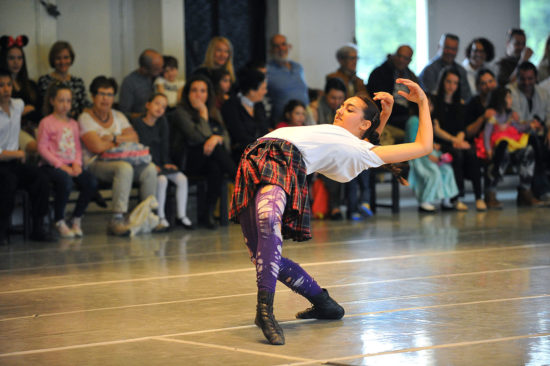
Kamuyot Photo by Gadi Dagon
Q: When you go into schools, supposedly you are inspiring a new audience, sometimes it’s confrontational, sometimes it’s hilarious, all those emotions… I’d like to ask what do you do after that? What’s the follow up? How do these kids become an audience? How does Batsheva connect with them and what’s the plan?
ON: We are committed to give this show as best as we can. We cannot follow it up. But we believe that we invest in the kids something that turns them on to want more. And I’ve heard from people that came to see a show of Batsheva over the years that they, maybe, open up to a new kind of music or new kinds of ideas because they saw Kamuyot. I think the audience feels that we respect them, that we don’t bring it down, that we bring them where we are. And it usually works.
Like this week the Ensemble, the dancers had a really tough show in Yerucham. I’m sure that, even though it was tough and the kids were nasty and noisy…Usually its actually the teachers who are more disturbing by trying to control the kids so there are conflicts between the kids and the teachers. We try to tell the teachers ‘let the kids do what they want’ but anyway I’m sure someone in this show got something from it, no? We believe in it, otherwise it would be very hard.
Q: First of all, congratulations, it was a wonderful show and wonderful dancers but I want to go back to the first question, the question of the name. It’s in relation to another work of yours that we saw earlier. A few people were discussing it and asking why would you use a name in a certain way. I came here from a country that is now stricken with disaster. Venezuela. It’s been a great place, a paradise, a very happy place. Now it’s a very sad place, defending its freedom, controlled by military. They don’t have food, they don’t have medicine, they’re dying in numbers. You called a work Venezuela. Is it just something that you do to call attention to what you do? We saw, for example, that you use your political opinions in your works. For example, in Venezuela there was a Palestinian flag.
ON: If you didn’t see or you don’t know, my last work’s name is Venezuela. And Offer (Zaks), who lived in Caracas and also was a victim of the regime, might have even been disturbed by the fact that I called it that, am I right?

Venezuela Photo by Ascaf
Offer: Yes.
ON: Yeah. You actually raised the topic of my research, which is how we use point of reference in how we experience a moment of performance or of a show. How we let a reference affect us and influence us in how we experience a moment.
Let’s say that somebody doesn’t even know that there is a country Venezuela and the two of you are two extremes. You both watch the show. Ideally you should have an experience that does not connect to the point of reference or the lack of knowledge of what the name is. You agree? Ideally. So, if you don’t know or you haven’t seen Venezuela, Venezuela is made out of two parts where the second part repeats the first part, almost the same choreography but with different elements of music and props.
One of the main reasons that I’m researching this experience for the audience and for me is about that point of reference. When you see the first part, you hear Gregorian chant music and you can feel the religious connotations, you see ballroom dancing and when you see the white flags, you think about surrendering or whatever. You see elements that can give you points of reference like ballet steps, you see a lot of things that can give you points of reference and they affect your experience. In the second part, I believe, that most of what you do is you remember the first part. You see the second part and the point of reference that you have, in this moment, is the first part.
I’m manipulating your point of reference in order to create a fresh, new experience of how we don’t let point of reference influence us too much. How we are not managed by the point of reference but we manage with the fresh moment of experience. And this is part of the idea that Venezuela can bring up with people.
Now, why did I call it Venezuela? Actually, I have two stories. I’ll tell you the first one, which is that when I wanted to give the work a name, I took a globe and I rolled it, I closed my eyes and put my finger down. And when I opened my eyes, it was Venezuela. That’s a good story. But that’s not the reason. I made it up. I made up this story because, I’ll tell you, it’s the easiest way for me to let go of the responsibility of explaining something that doesn’t really need an explanation. Because, we shouldn’t take names too seriously just like we shouldn’t take symbols too seriously.
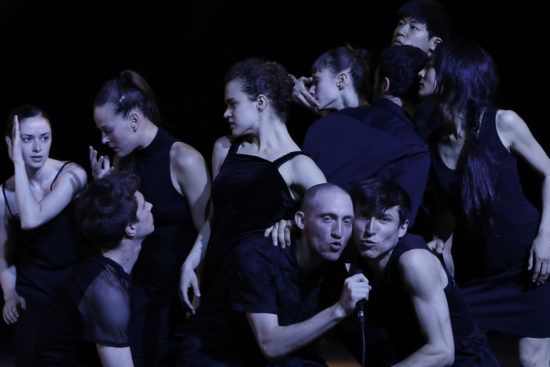
Venezuela Photo by Ascaf
If I look at Facebook there must be half a million Venezuela, not only the country, I’m sure there are girls named Venezuela, restaurants named Venezuela in Bangladesh maybe. Venezuela is a used name already. But the real reason I used Venezuela, first of all, I really like the word. I find that word really rolly and nice, it looks good phonetically. I feel there is something very feminine about it. I like that it’s made out of Ve-ne-zu-e-la, so many syllables. I like it for that.
It stemmed from the idea of this piece made out of two parts. In Hebrew, we have what we call ‘Vav hachibur’ which means Ve. If I say, ‘me and you’ I would say ‘ani Ve-ata’. The Ve- is the first vowel of Venezuela so what I called it for a while was ‘Nezuela Venezuela’ that was the name. Nezuela Venezuela, like a couple. But then I realized that it doesn’t work anywhere else, just with people who speak Hebrew. So, I cut the beginning and I was just left with Venezuela.
I’m aware of the suffering of innocent people. I am aware of what you’re saying but I don’t feel there should be a problem because I don’t disrespect it, I don’t judge it, I don’t criticize it. If you talk to me in person you’ll know what my opinions are about the regime in that country. I hope I answered your question.
Q: The work is 14 years old, what we just saw. Have you changed it at all in that time?
ON: Very nice, good question. I changed it a lot. You want to see a change that happened? Want to show it? (Dancers demonstrate a recent change). For me, it’s very meaningful. It’s a small gesture but most of those changes are about small gestures. They come together into the right tension of all the elements to the narrative of the dance, it’s based on those exact moments. So, I change a lot. It’s not the only piece I change.
For me, the premiere is always just the beginning of the continuation, the beginning of a chapter in the process of my choreography process. The idea of choreography is connected a lot to my relationship with the dancers, how they interpret my work. I don’t separate choreographing from what the dancers interpret anymore. This is what the work is. It’s their interpretation. So, I invest a lot in that. That’s what has changed a lot. The toolbox that they have to interpret the work is different. Also, the choreography, the music, the steps.
Q: Does it matter to you to that you’re doing something like “Simon says”? You do a gesture and then the gesture is copied.
ON: That’s a point of reference and that is welcome. Maybe you can talk to me about it because I’m not sure what you’re referring to. Do you want to elaborate?
Q: There’s a children’s game where you say Simon Says and they copy it. I wonder if that was in your mind.
ON: This game wasn’t in my mind but the idea of copying what someone else does for us is a very fundamental and important aspect of learning. You’re learning by copying, the good stuff of course, the idea of learning, you don’t need to invent the wheel, you’re copying the wheel. Copying in dance is really important. There is no artist who doesn’t copy. It came to us very naturally and it’s much fun.
Q: How old are the (Ensemble) dancers? How long do they stay in the young company? Does it give them access to the main company?
ON: They are between 18 to people in their 30’s. They don’t really have an age. It’s a matter of passion and how I work. If you’re willing to take part in this. We know that this is a great place for dancers, whether they’re in the beginning, middle or wherever in their career. Usually they are in the beginning of their career but not only. We have people that have joined from ballet companies or full-time jobs as dancers and they came to the Ensemble. But most of them come from high school. We have Juilliard graduates or other university graduates.
In the company, except for 2 dancers, everyone came from the junior company. This is the idea. This is how I get to know them, how we get to know them and prepare them. Very rarely someone not from the Ensemble will join the company.
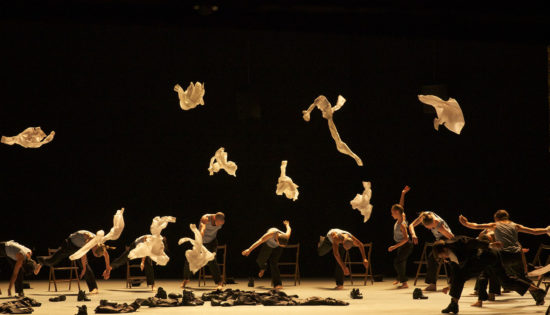
Decadance Photo by Gadi Dagon
Q: What is the next choreography?
ON: My next choreography is actually also going to happen not in a theater, the audience will see it a little differently. I think of it now, it’s subject to change, but it will be a lot about performing. In the end, it always conveys human feelings and conscience but I want my research with the dancers to be about the act of performing.
Q: All the time I’m thinking why did you decide to dedicate to (this performance) children? Did you have special things that you thought would be for children?
ON: For the past 8 years, most of the movies that I watch are with my daughter. I watch movies for kids but I enjoy them a lot. They are very well done. Sometimes I prefer them to a lot of adult movies. So, these movie creators are creating something that I can also participate in as an audience.
Part of my work with the company is to provide choreography works for the junior company and the main performance venue for the junior company is in schools. It wasn’t made with the intention that only kids could see it. On the contrary, I like it most when the audience is mixed, when parents come with their kids. Also, the dancers like that best. As I said something about my heart, my intention, my love for kids, guided me through. It helped me.
Q: The dancers were wonderful, they do difficult movement, it can be for adults, for children, I didn’t see big differences between your pieces.
ON: There is no real difference. If there is a difference it is small. There is a lot more in common. When anyone creates a work, it will be with his creative juices, his imagination, his skills…That’s the important thing. He can market it for different audiences but there is a lot in common whether this artist created it for kids or adults.
Q: Why is Gaga not a method? Is it a way of philosophy, a life and an energy?
ON: The main reason I don’t like to call Gaga a method is because it’s in research. When you research and try to develop something you don’t say it’s a method. I call it a movement research. And maybe it will never be called a method. You can call it a method, I don’t call it a method. It’s a research, still and real. It’s moving on and changing. Also, it’s not a style. Many times, when you talk about method in dance there is a style, a technique. Gaga is more that if you do ballet you can use it and add it to your toolbox. We offer it for people who have no ambition to dance so they can use it for their wellbeing.
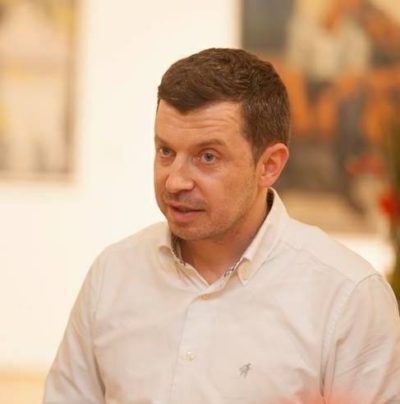 Atanas Maev studied Economics in Germany and has been working as a cultural manager since 2002. He is a co-founder of the first center for contemporary dance in Bulgaria – Derida Dance Center, as well as Derida Company. As a result of his work, Derida Dance Center is recognized as a partner in numerous international projects, runs an educational and training program in contemporary dance called Dance PORT Derida and works with various social groups. In January 2014, Derida Dance Center Residency Program was recognized by experts of the European Commission in Brussels as the best practice for exchange of artistic experience in Europe together with four others. In 2015, the management model of Derida Dance Center was chosen among 240 cases from all over the world and was included as an example of successful cultural entrepreneurship in the postgraduate textbook “International Entrepreneurship in the Arts” by the researcher Lidiya Varbanova and issued by the publisher Routledge.
Atanas Maev studied Economics in Germany and has been working as a cultural manager since 2002. He is a co-founder of the first center for contemporary dance in Bulgaria – Derida Dance Center, as well as Derida Company. As a result of his work, Derida Dance Center is recognized as a partner in numerous international projects, runs an educational and training program in contemporary dance called Dance PORT Derida and works with various social groups. In January 2014, Derida Dance Center Residency Program was recognized by experts of the European Commission in Brussels as the best practice for exchange of artistic experience in Europe together with four others. In 2015, the management model of Derida Dance Center was chosen among 240 cases from all over the world and was included as an example of successful cultural entrepreneurship in the postgraduate textbook “International Entrepreneurship in the Arts” by the researcher Lidiya Varbanova and issued by the publisher Routledge.
In 2018, the team of Derida Dance Center led by Atanas Maev will organize the festival Spring Forward by the biggest European dance platform Aerowaves- Dance Across Europe and will present the TOP 20 emerging European choreographers.
